During wartime, the soldiers used all kinds of different weapons to fight. Each weapon has its characteristics. Today, we will show you what sights the military uses to understand. Keep reading for more details!
5 Sights Does The Military Use
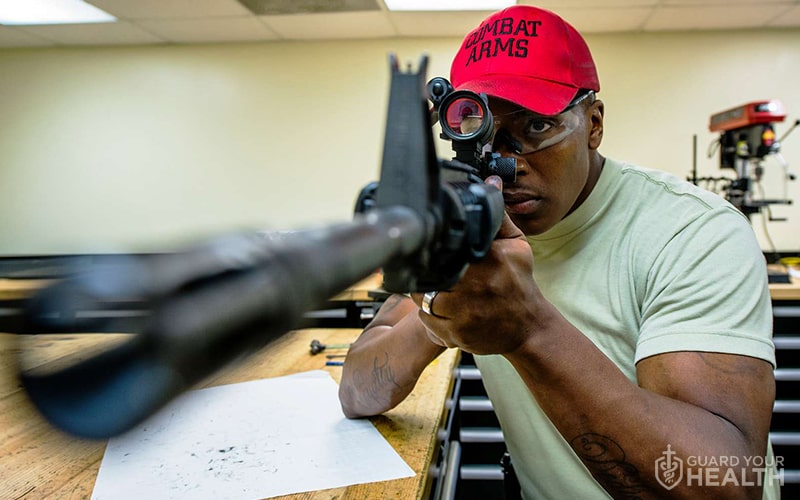
Sights the military use is one information that many people are interested in. In fact, different optics are used in the military, and each unit also has other optics. A separate version from conventional forces can be for some unique units.
However, the following shares will share with you some of the types of optics used and whether ordinary people with passion and collectibles can buy them:
M68 Close Combat Optic (CCO)
Specifications:
- Weight: 14 ounces
- Length: 5.3 inches
- Magnification: None
The M68 Close Combat Optic is the first on our list. This version is quite popular in the military and the market in general.
The government will place orders from manufacturers in hundreds of thousands of products each year. But, people only use the site in certain branches.
This version is also known as Aimpoint CompM4. One of its most outstanding advantages is its accuracy, durability, and integration of various viewing angles, from wide to narrow, suitable for many different purposes.
Of course, not all military units like it, especially those who prefer a pistol with more specific sights.
EOTech 553
The EOTech 553 has extremely accurate red aiming points that are usually red points of view. When combined with lasers, they can perform diverse 3-dimensional viewing angles to increase accuracy when aiming guns to shoot.
When you compare the EOTech 553, you will find that this product will find the design, use, or other factors quite similar to the Aimpoint CompM4. However, on the durability scale, we will see that Aimpoint CompM4 stands out more.
According to military advice, you should check EOTech 553 before using it because they have discovered some technical errors during testing and practice.
ACOG
ACOG is a point of view that only special military units use. However, after a while, in Army or Marine units, using ACOG is more widespread and widespread than before.
Trijicon ACOG sights are pretty famous in the residential market. In the military, they mainly use versions such as TA31RCO-A4CP, 4×32, TA31RC-M4CP, and TA31RCO-M150CP. In addition, there is also an additional ACOG/RMR combo for increased aiming accuracy.
Sight magnification ranges from 1.5x to 6x, depending on the model. Unlike many reflex aiming points, ACOG does not require a power source to emit the line of sight.
The ACOG line of sight (various shapes and colors) is illuminated by a fiber optic external light tube in well-lit conditions, such as during the day.
In addition, the built-in tritium is used to fluoresce the line of sight in situations where sufficient light cannot be obtained, such as at night.
Before using these guns, you should check their zoom and zoom carefully.
ACOG has received rave reviews for its durability. In fact, they use red dot optical fibers or lasers to increase accuracy each time they are used. Maybe that’s why ACOG’s price is relatively high.
Leupold Mark 4
Next, we will learn about the M4 and the sniper aiming points. M4 and sniper aiming points are 2 of the popular aiming points used quite a lot while shooting. However, how to attack will depend quite a lot on the shooter.
If you participate in shooting competitions in a military environment, you can ultimately choose an entirely different version from your opponents for yourself. In other words, the scopes of the contestants are not necessarily identical.
However, the first standard optics for snipers is the Leupold Mark 4 appeared for the civilian market.
Leupold Mark 4 has a few modes to zoom in and zoom out to different points. This product has quite a lot of positive, quality feedback about its performance.
Besides, Mark 4 also has a crystal clear magnifying glass with few products’ precision. Maybe that’s why they’re so expensive.
Schmidt & Bender PMII
The PMII is a particular type of sight extremely popular with snipers.
When placed on the scale, we can easily see their similarities with the Leupold Mark 4, such as accurate magnifying sights. However, Leupold Mark 4 is lower than Schmidt & Bender PMII.
According to theory and practical experience, this type of optics is suitable for snipers. They have pretty high prices and perfect quality when used.
What Does the Military Look for When Choosing a Sight Optic?
After choosing the right gun, it is pretty difficult to train your eyesight to have a standard aim. Besides guns with red dots available to purpose, you also need a binocular when aiming at objects at a distance.
Here are a few things you need to know:
Distance
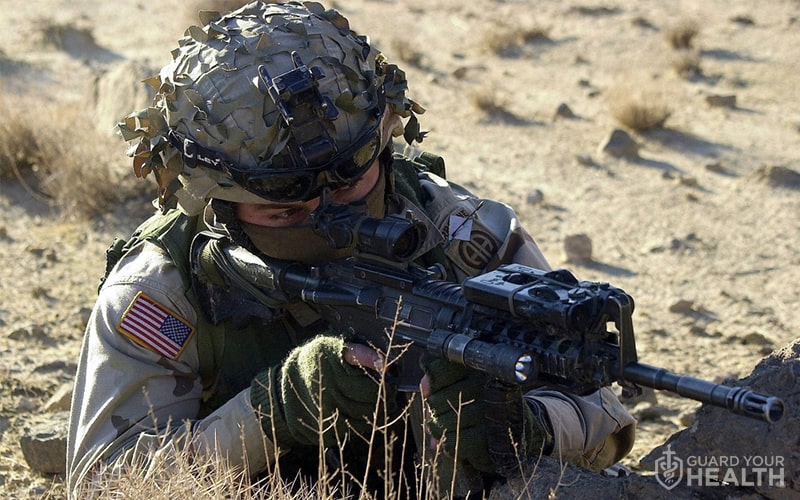
The first thing you need to pay attention to is to consider attaching optical devices between the photographer’s distance and the subject to have the most accurate view.
Handy
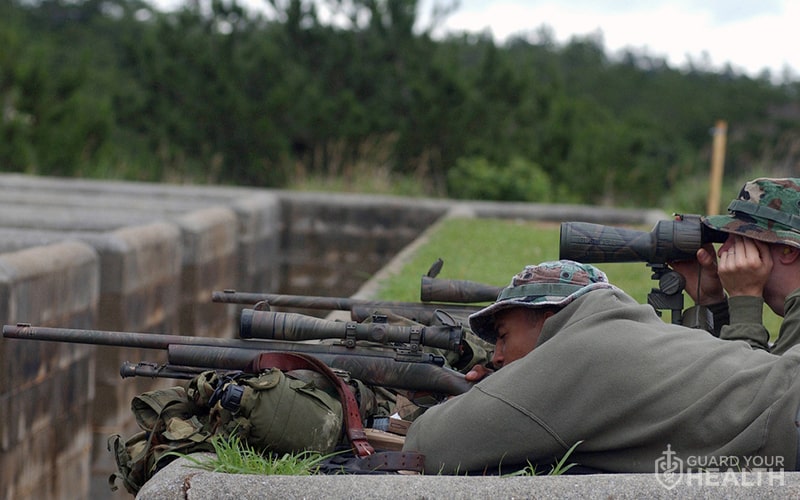
Next, you need to have the ability to shoot experience. Achieving this is not based on talent but mostly on your practice and efforts.
The more time you spend practicing them, the more stable your aim and shooting ability will be.
Our advice for beginners is to choose guns with red dots and laser sights because they will help you align better and shorten your aiming time.
Sight Gear
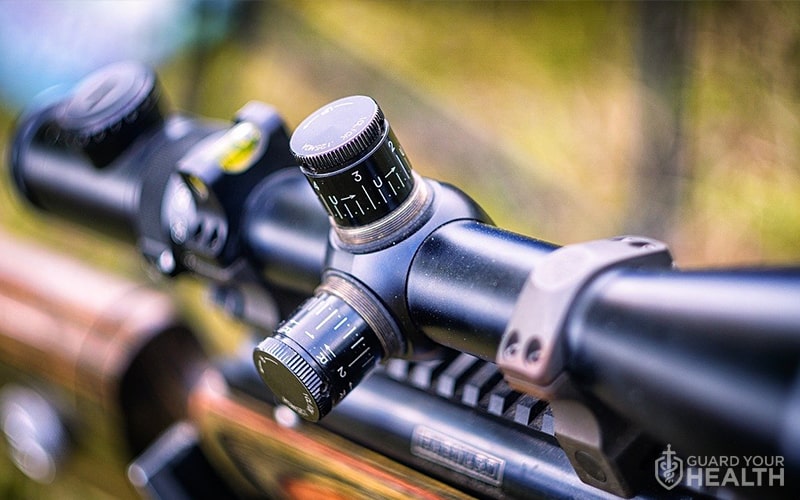
The Sight Gear is a must-have with any gun. Any military unit chooses Sight Gear because of the quality and efficiency they bring.
You can choose red short-range guns depending on the purpose of use. However, it is essential to consider the location and time of the shooting practice carefully.
Durability
Because it is mainly used in the military, the guns need to be suitable for all weather conditions and dangerous terrain to help the red dot laser part take full advantage of even the harshest conditions.
The optic gear must operate at total capacity under any circumstances. The lifespan of this type of device is quite durable.
According to the manufacturer’s share, the laser batteries they produce can be used for up to 5-6 years continuously without any technical problems.
Conclusion
Our article has helped you answer questions related to the topic: “What sights does the military use?”
Hopefully, the above information has helped you better understand the guns, sights, and a few notes when using these devices!
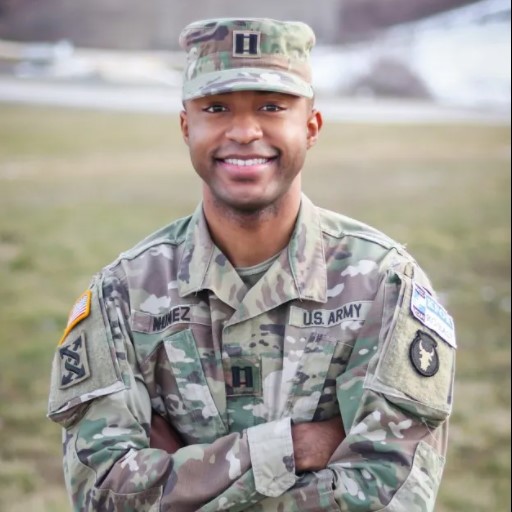
The 16th Sergeant Major of the Army, Sgt. Maj Christian Smelling was sworn in on August 11th 2009 and has held every enlisted leadership position ranging from cannon crew member to command sergent major
